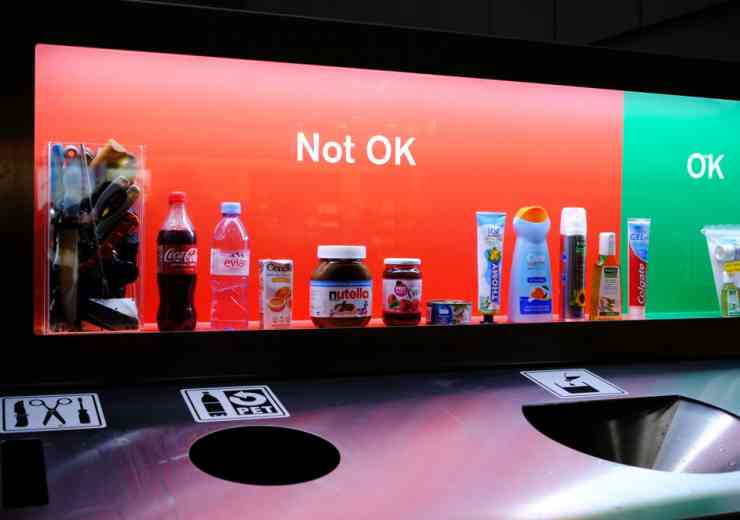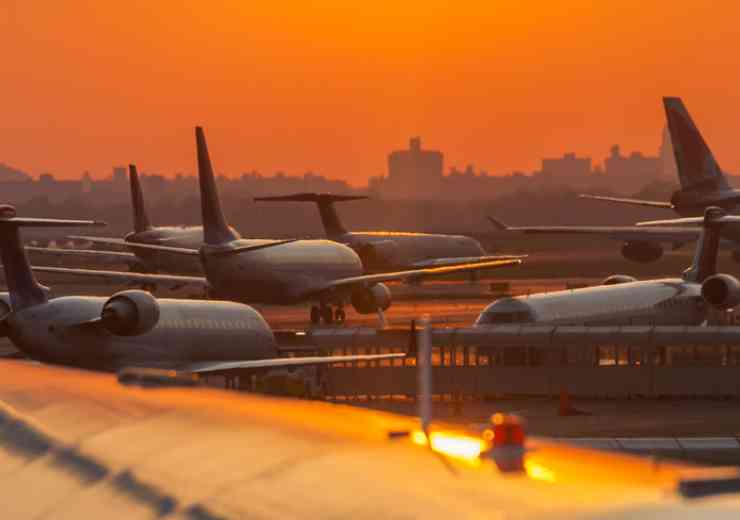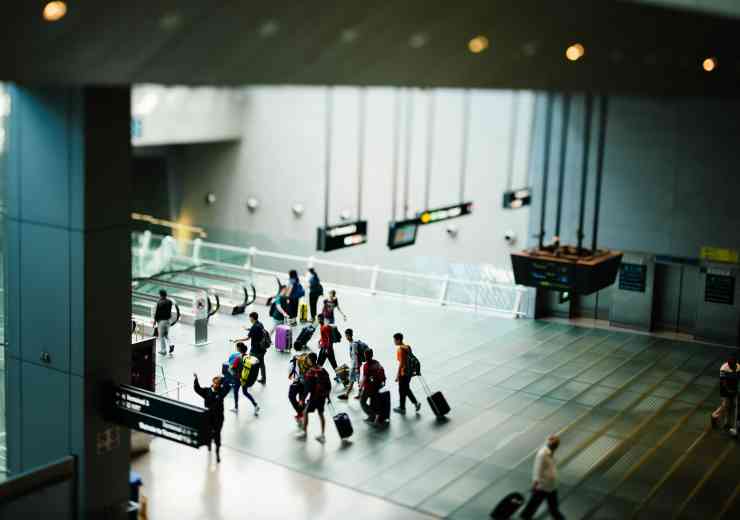Security in light of increased aviation threats
 In a post-9/11 society, civil aviation security is, and will always be, a key priority across the globe. Since 2001, the landscape of security has changed dramatically, particularly within the aviation sector. However, despite an increased focus on the security of aviation staff and passengers alike, the industry is not without security related incidents. Even as recently as March 2015, a machete-wielding man attempted to breach a checkpoint in New Orleans international airport.
In a post-9/11 society, civil aviation security is, and will always be, a key priority across the globe. Since 2001, the landscape of security has changed dramatically, particularly within the aviation sector. However, despite an increased focus on the security of aviation staff and passengers alike, the industry is not without security related incidents. Even as recently as March 2015, a machete-wielding man attempted to breach a checkpoint in New Orleans international airport.
Biometrics
Since 9/11, despite advances in counter-terror measures, airports have remained vulnerable. In 2007, Glasgow airport was attacked as a Jeep Cherokee loaded with explosives was driven into the main atrium. Luckily, this attempt was unsuccessful, as was an attempt on Christmas Day 2009 to detonate explosives on a Detroit‑bound aeroplane in an incident worryingly reminiscent of 9/11. Not so fortunate was Moscow’s Domodedovo Airport in early 2011, as over 100 people were injured and 35 killed as a bomb was detonated in the arrival hall of one of Russia’s busiest airports just days after the UK’s terrorist threat was raised from ‘substantial’ to ‘severe’.
As a result, one of the most important factors of aviation security is ensuring that passengers feel safe in their surrounding environments, whether it be in the terminal or up in the air. Naturally, airports of all sizes experience high volumes of luggage and footfall on a daily basis.
Consequently, security personnel have come to rely increasingly on technology to help ensure the safety of passengers, crews, equipment and staff. Biometric technology is one way that this can be achieved.
Biometric airport technology is not a new concept, with the first commercial application of a fingerprint reader being launched in 1984. However, due to the increased risk of terrorism over the past decade or so, its popularity has understandably soared.
Biometric technology uses the unique human characteristics of a person in order to provide irrefutable proof of identity and has become commonplace throughout the traveller experience. Heathrow airport rolled out upgraded biometric technology after 18 months of trials towards the end of 2011, meaning that passengers in all five terminals are scanned twice between arriving at the airport and boarding their planes.
Fingerprints and digital images stored on e-passports are also used regularly across Europe. The information supplied by biometric data is checked against immigration and security watch-lists of terrorists and criminals stored on a database, allowing for any potential threats to be quickly identified.
Such measures not only allow for a more streamlined experience through the airport, allowing for faster passenger processes, but also deliver a sense of increased safety.
A physical presence
While biometric technology is quickly advancing and making a positive impact on airports, the steadfast support of a physical security presence will no doubt remain to be irreplaceable.
While technology – such a CCTV and access control systems – can gather essential intelligence to identify a threat, it still requires a physical presence to act upon them. Uniformed officers not only act upon these threats, but their general presence can allow passengers to feel more secure. Regularly patrolling the building and perimeter areas, these officers are trained to provide an essential first response to emergency situations.
Advances of CCTV technology
While these officers can keep a watchful eye on the ground, CCTV cameras allow for 24-hour protection and can be placed effectively around an airport in order to monitor the entire facility. Naturally, CCTV images can be extremely useful in identifying criminals and watching back recordings in order to piece together incidents.
The effectiveness of video surveillance technology is continuously improving, and it has already established itself as a vital security tool for the police, private companies and many public sector organisations. An effective CCTV system contributes to the detection and prevention of crime, as well as protecting towns, cities and transport networks from the threat of terrorism.
A key area where CCTV is rapidly developing is that of video analytics. This impressive technology is already contributing to the security of a range of high-level facilities such as city centres, transport facilities, and utilities.
VCA is essentially the automatic analysis of CCTV images in camera or centrally, utilising advanced algorithms to create useful information about the content. Generally, these systems need a static background and consequently tend to operate with fixed cameras or Pan Tilt Zoom (PTZ) cameras at set positions, as they are looking to identify changes or movement at a particular scene. The scope of video analytics is considerable and can be used in the detection of intruders, abandoned packages, wrongly parked vehicles or people counting, all of which are extremely important within and around an airport.
One particular area that VCA can be especially effective is around the perimeter of an airport, such as around the airfield where an intruder would not only be risking their own lives, but could be posing a potential threat on aircrafts. Securing a perimeter can be seen as one of the most crucial steps in any security plan. An early detection of a threat also means that there is more time and space available to formulate the necessary response, potentially preventing a threat all together.
Perimeter-specific applications of VCA, such as the tripwire function, can be especially useful in this kind of protection. VCA can be utilised in order to create virtual tripwires along existing fences or areas of a perimeter where other forms of physical security would be impossible or impractical. If a person is simply walking near a site, they are not necessarily considered a threat and a great amount of attention does not need to be paid to them.
However, if that person then crosses the tripwire into a secure area, an alert can be raised. The VCA draws attention to the cause of the alarm, often by highlighting it in a red box, and an operator can quickly assess the nature of the alarm. VCA is more resistant to false alarms caused by vegetation or animals and lower false alarm rates improve security.
The operational response might be to issue a verbal warning over the system, which scares off intruders and prevents them from entering the premises further. Depending on the threat of the attempt, operators can also decide to covertly alert the authorities without the intruder realising they have been detected.
Securing Cargo
While the safety of people at airports is extremely important, securing cargo should also take priority. Cargo securities primary concern is the handling of the goods at cargo depots, ensuring only authorised personnel are able to access them, and mitigating against the risks of tampering.
Threats to valuable cargo can vary from theft, vandalism, arson attacks, terrorism and even animal trafficking, as well as general health and safety issues such as accidental fires. An effective risk analysis, security policy, strategy and most importantly procedures and auditing, addresses and provides solutions to all of these risks. The challenge, however, lies in putting this in to practice, with extensive premises, disparate sub-contracted companies involved in the cargo handling process, large numbers of vehicles and people potentially entering and leaving restricted areas requires a holistic approach to security.
Given these multi faceted threats, undertaking a comprehensive risk assessment is the first and most important step towards overcoming them. Risk assessments carried out by reliable, accredited and professional security providers such as consultancies will highlight the nature of the potential threats faced by depots, identifying the most vulnerable areas of the sites or any weak links in procedures.
From the risk assessments, vulnerabilities will be highlighted and recommendations report produced detailing the most appropriate security measures to employ.
In an environment where the flow of people entering and exiting the site must be monitored, it is important to ensure the perimeter provides meaningful physical barriers that will deter any sort of unauthorised access. Physical security measures represent a key starting point when securing cargo, preventing access to where the goods are placed. These systems include locks, barriers and fences, and are often combined with electronic security systems as well as manned guarding services.
Creating barriers to access demands attention to a variety of design considerations such as sufficient height and strength, the use of climbing impediments, secure ground fixing as well as the provision of clear areas to facilitate surveillance and maintenance.
Physical security measures are essential not only for the protection of perimeters, but also for the buildings themselves, externally and internally. Locks are the most basic of measures, and provide a fundamental layer of security, which will prevent crime by deterring criminals and slowing them down when trying to break in. A good quality lock can last for years; however, the popularity of this security product means that people often buy one that is inferior in quality under the misunderstanding that it will provide them with financial savings.
Access control measures
High standards are essential when selecting and installing physical security. A quality lock, for example, should comply with BS 3621: 2007 and be specified to meet the requirements of the door or window that it is securing. This challenge also goes beyond the lock, since it is the management of keys that is fundamental. Suited locks will provide a reduction in the number of keys and Electronic Key Management Systems (EKMS) will ensure an audit trail of who had what key at what time. This has the added advantage of being able to restrict individual’s access to keys and therefore areas to specific times, and to remove an individual’s access rights when they leave the business. Smart keys are also a useful addition in terms of key management, these keys, containing tiny processors can be dynamically enabled or programmed to only open a specific door at a specific time, remotely from an alarm monitoring centre.
Another popular and hugely effective way of keeping unauthorised people out of cargo depots, or away from areas where cargo is stored at airports, is the use of access control systems. Depending on the location and sensitivity of the building or area involved, access control measures can range from paper-based logging systems for temporary contractors’ permits through to access control cards using radio frequency identification (RFID) chips for more convenient proximity reading of card details and activation of gates, turnstiles and vehicle barriers.
To ensure the effective application of access control technology or more traditional locking strategies, it is important to have clear policies, procedures and auditing in place that will ensure that only authorised personnel are in possession of access cards, codes or keys. Duress codes should also be considered, so that should an employee be forced to access an area, a secret code can be generated to the alarm monitoring centre, alerting them to the duress situation.
The most important aspect of aviation security is that the security measures in place have been purchased from quality, reputable suppliers. Such suppliers must meet the relevant European and British standards for their product, ensuring that they are the best of the best. BSIA members are inspected to these standards and offer a reputable service.
Further information
www.bsia.co.uk
digital issue




















